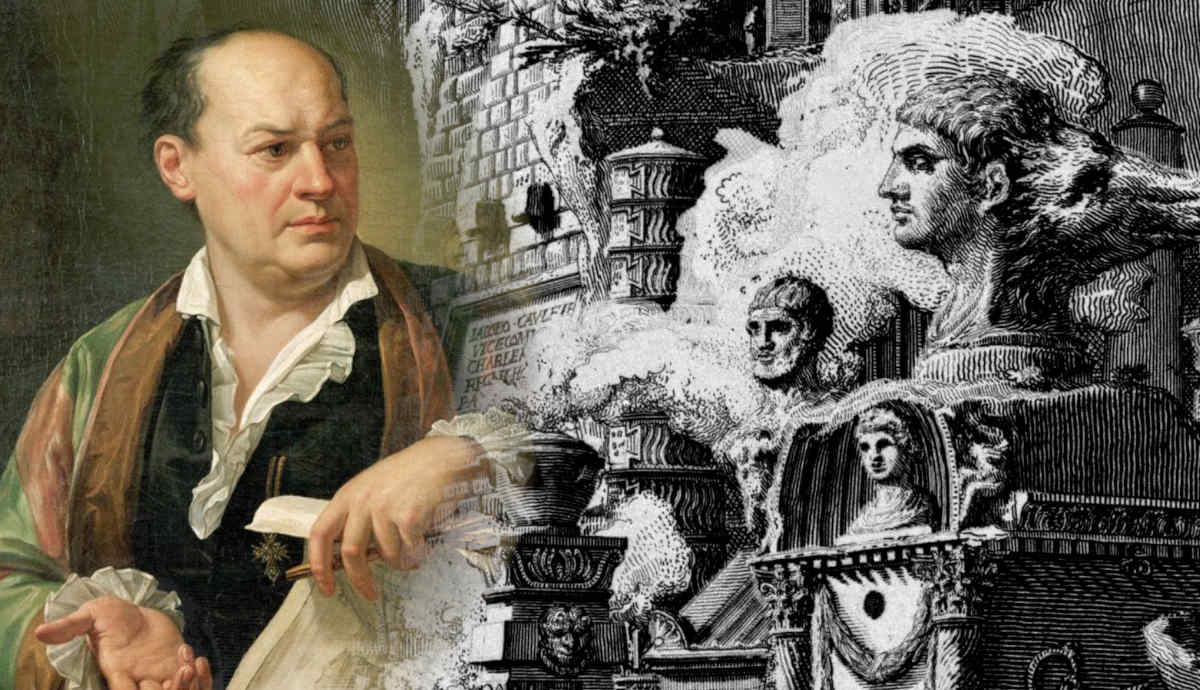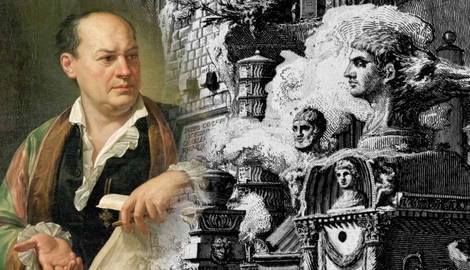
Giovanni Battista Piranesi is a highly accomplished engraver, commonly referred to as simply Piranesi. He is an Italian artist celebrated for his large etchings of Rome and a series of fictitious prisons. Due to his combined interest in the classics, architecture, and etching, Piranesi was able to capture the most accurate images of Rome during the 18th century.
12. Piranesi was an architect

Piranesi’s uncle, Matteo Lucchesi was a leading architect. He was responsible for restoring historical buildings throughout Italy. As a member of the Magistrato delle Acque, he was working to restore and engineer historical buildings and monuments
This familial connection gave Piranesi the opportunity to intensely study as an apprentice under a successful architect. Later in his life, this architectural knowledge becomes evident. His engravings capture buildings with such accuracy that knowledge of their inner workings becomes apparent.
11. Piranesi studied the classics

Piranesi’s brother Andrea introduced him to both the Latin language and classical, ancient studies. He had the most connection to Roman classical history. The brothers spent a good deal of time reading and discussing Rome’s history. Piranesi came to see himself as a citizen of Rome regardless of his physical location.
By studying the classical city of Rome and its architecture, Piranesi was able to piece together what buildings truly looked like in their prime. He could add in notes about their engineering and ornamentation for a better understanding as well.
10. Archaeologists study his etchings

Though aesthetically beautiful, his works are considered technical renderings worthy of study. Given their astute architectural accuracy, his etchings were examined by archaeologists. Since over a third of the monuments that Piranesi etched have completely disappeared today, his etchings are often the only archaeological source remaining.
Other monuments have since been restored poorly, not taking into account what they actually looked like in their prime. Piranesi’s works can show archaeologists what they looked like before these unfortunate conservation efforts.
9. Piranesi reinvigorated the public’s interest in Ancient Rome

Though not photographic evidence of ancient Rome, Piranesi’s etchings create the best possible glimpse into Rome of the 18th century. His artistic expertise, classical knowledge, and architectural skills render realistic looks into this time.
This possibly led greater public and academic interest in these monuments, possibly saving a few of them from destruction. The Magistrato delle Acque was actively working to save these buildings while Piranesi was printing.
8. Piranesi was “too good” to be an engraver

Piranesi studied the technical art of etching and engraving under Giuseppe Vasi. Vasi was engraving city monuments just like Piranesi. According to historians, Vasi had said “You are too much of a painter, my friend, to be an engraver.”
Though engraving is most definitely an artistic skill worthy in its own right, his teacher believed that he should be a painter. Painting is often considered a finer art. This being said, he ignored his teacher and instead became one of the most technically proficient engravers of the time.
7. Views of Rome is his most acclaimed series

After settling back in Rome and opening his workshop, Piranesi worked alongside pupils of the French Academy in Rome to create his most well known series, Vedute (Views) of Rome.
At this time, the Enlightenment was in full swing and so was The Grand Tour. This tour was frequented by upper class young men and the epicenter of the experience was Rome. This helped intensify Piranesi’s love for the city. It also made it a profitable subject matter. He created many views of Rome which were printed during, and after his lifetime.
6. Piranesi’s views exuded Neoclassicism energy

Unlike the more Baroque works created by artists like Claude Lorraine, Piranesi’s scenes of Rome were more Neoclassical. They harkening to a living time of the past while the Baroque works romanticized the structures decay. Baroque focused on a sort of memento mori feel.
Piranesi’s Neoclassical works capture the nature and living culture of the past. They sometimes included human figures, though they were often impoverished or sick to mirror the decaying buildings. His works brought the past back to life in a tangible way for its viewers.
5. His Views Shaped Goethe’s understanding of Rome

These prints conceptualized Rome for 18th century people who had never visited. Piranesi’s Vedutes eclipsed previous depictions of Roman architecture. Piranesi’s were more accurate, descriptive, and also extremely dynamic. Their compositions and lighting were highly artistic and aesthetically pleasing, drawing in viewers who may not care for pure archaeology.
Goethe, the great writer, came to know Rome though Piranesi prints and claims to have been disappointed when he actually saw Rome.
4. Piranesi Influenced Romanticism and Surrealism

Piranesi’s other major series is called Carceri d’invenzione (Imaginary Prisons). It consists of 16 prints, produced in both first and second states. These depict sweeping, underground chambers. They show massive staircases and towering machinery.
Many similar engravers such as Bellotto and Canaletto chose different themes. Their subjects were bathed in sun and had happier themes. Piranesi on the other hand, depicted these fanciful, dramatic, distorted labyrinth like structures. These could be considered influences for later movements, Romanticism and Surrealism.
3. Piranesi became the Director of Portici Museum

Piranesi was not only a visual artist. He spent some time working as an art restorer as well. He conserved some ancient works including an ancient sculpture now known as the Piranesi Vase.
His work as an artist and conservationist was not left unacknowledged. He was given the title of Director at the Portici Museum in 1751. He also created an etching of the museum’s architectural layout.
2. Piranesi created until he took his last breath

Piranesi had a tireless devotion to his work that continued until his last moments. He reportedly said that “repose is unworthy of a citizen of Rome” and passed his last hours on earth working on his copper plates.
He was buried in Santa Maria del Priorato, a church he helped restore. His tomb was designed by Italian sculptor Guiseppi Angelini.
1. Piranesi prints can be relatively affordable

On for $1,800 at 1stDibs.com
Since Piranesi was a printmaker, it is relatively easy to come across his works and this means, that they can be relatively affordable. His prints are often significant in size, yet still sell for under $10,000. This being said, there is still a chance that a rarer impression in perfect quality can have a much higher value.










